AMD Radeon RX 5500 XT Reviews
Today was the official launch of AMD Radeon RX 5500 XT GPU. It is the answer to the recently released Nvidia GeForce GTX 1650 Super. The first reviews have appeared on the web and show that while the card is not bad, it is also not among the cheapest.

The web has seen first reviews of the new GPU from AMD, the Radeon RX 5550 XT, which is simply an overclocked model of the non-XT variant. It is a mid-range performance system based on Navi 14 core (RDNA architecture), manufactured in the 7 nm process. This is not a full chipset with 1536 shading units - their number has been limited to 1408. Game mode clock has been increased compared to the normal Radeon RX 5500 (1717 MHz against 1670 MHz). Boost in both cases is the same and reaches values up to 1845 MHz. Custom models may vary in timing depending on the version.
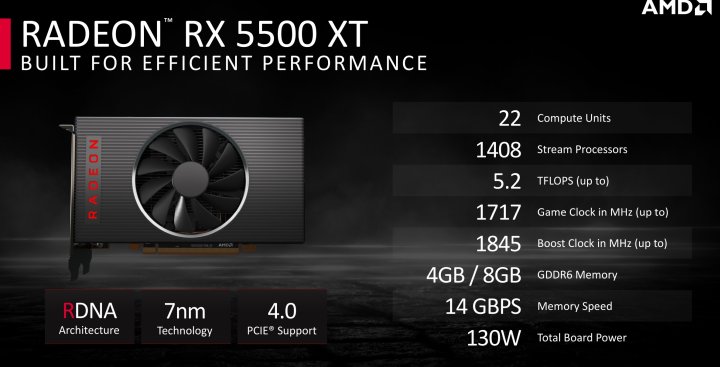
The card is designed to play in Full HD resolution and does rather well in it. On paper it was supposed to be a competition for the GeForce GTX 1650 Super. Is it really the case? You can assess this on the basis of the following graphs from selected reviews.
Guru3D
"If you focus in at the target resolution of 1920x1080 then I'd say AMD has got a super fun new product. (...) We do recommend the 8GB version over 4GB, however, that is a bit of opinionated advice from us as, in the Full HD domain, 4GB might just be enough. If you are a little more savvy with high-quality textures etc., then hey... 8GB man. Realistically the 5500 XT card makes good sense in the Full HD space (monitor resolution of 1920x1080) and can even handle games at a resolution of 2560x1440 (Wide Quad HD) if you opt for 8GB," can be read in one of the reviews.
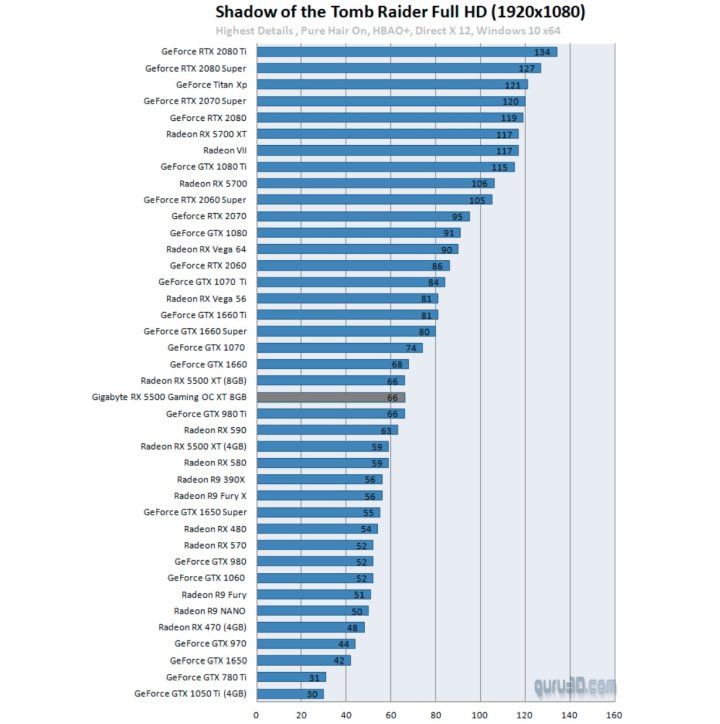

TechPowerUp
"MSI RX 5500 XT Gaming X achieves a 7% performance increase over the RX 5500 non-XT, which is bigger than expected. When taking a closer look at the performance results, you'll see that most of that gain comes from the larger VRAM size, which can be quite impressive in some games. In games where 4 GB VRAM is enough, the card roughly matches the RX 5500 non-XT 4 GB. MSI's Gaming X does win against the NVIDIA GTX 1650 Super, delivering 4% higher performance," reads the review of MSI's custom design
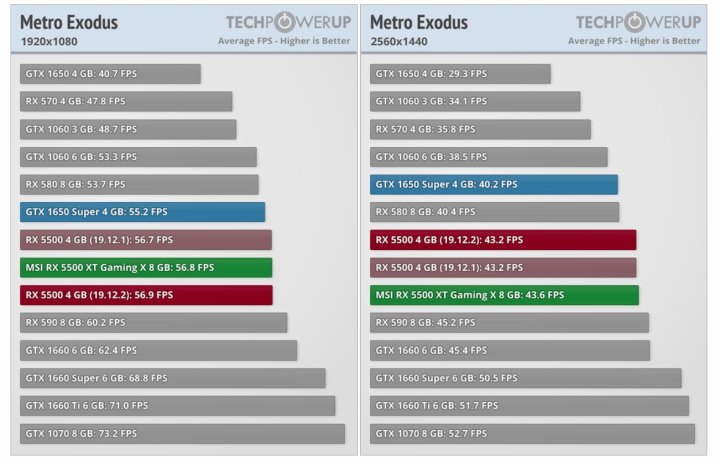

Tom's Hardware
"When compared to the Nvidia’s current competing cards, performance of the 4GB RX 5500 XT lands between a GTX 1650 Super and GTX 1660, when VRAM doesn’t get in the way. In titles where it does, the AMD card then tends to trade blows with the GTX 1650 Super and sometimes even the GTX 1650. The moral of the story here? Either variant is a welcome addition to the market, but If you intend to play modern AAA titles at Ultra settings, go with the 8GB variant to get the most out of your new GPU.
After a much-delayed and anticipated release, AMD’s RX 5500 XT is a compelling product and gives users more than one good choice in the sub-$200 category for 1080p gaming. The RX 5500 XT is a good replacement card for the aged Polaris architecture and RX 4xx/5xx series of cards," the author of the review concludes.
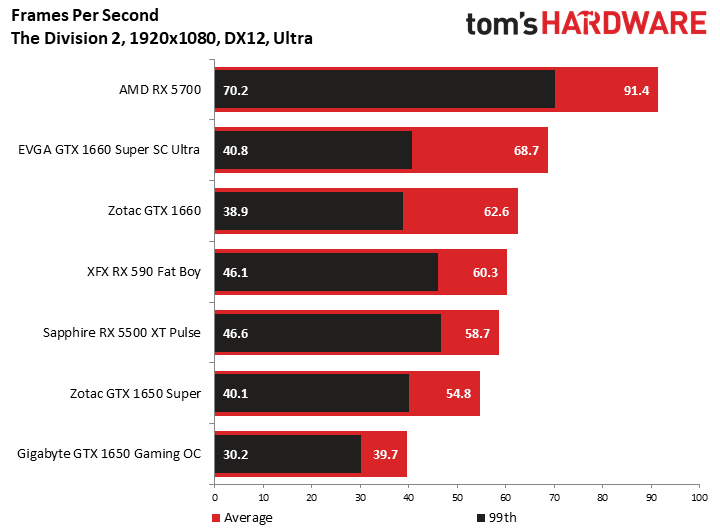
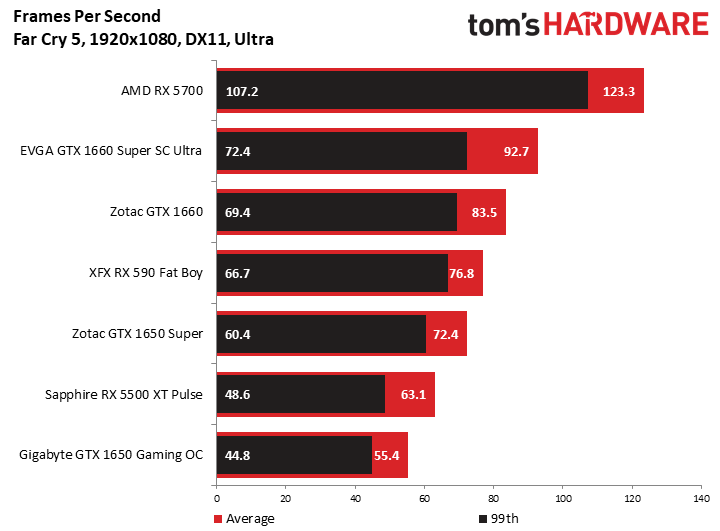
It's not cheap.
Radeon RX 5500 XT GPU is available in two variants: 4 GB and 8 GB (both with 128-bit bus). Depending on the amount of memory on board, we will pay for them 169 and 199 dollars respectively. This is more than for the GeForce GTX 1650 Super, but a little less than for the GeForce GTX 1660 and when it comes to performance, the new chipsets lands right between the two. Better, often more overclocked versions of non-reference cards of the following companies: Asrock, Asus, Gigabyte, MSI, PowerColor, Sapphire and XFX will cost us more. You can see them on the pictures below. The prices are not very attractive as they are higher than GTX 1650 Super. It doesn't look very good in the case of the version with 4 GB memory, which is able to stand out in terms of performance in games using more VRAM, which is especially visible in Tom's Hardware tests.
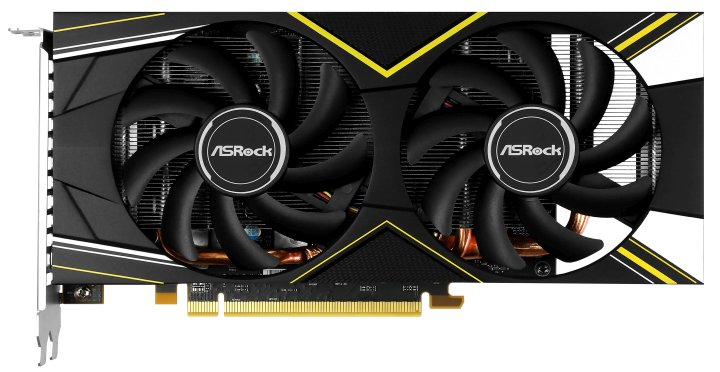
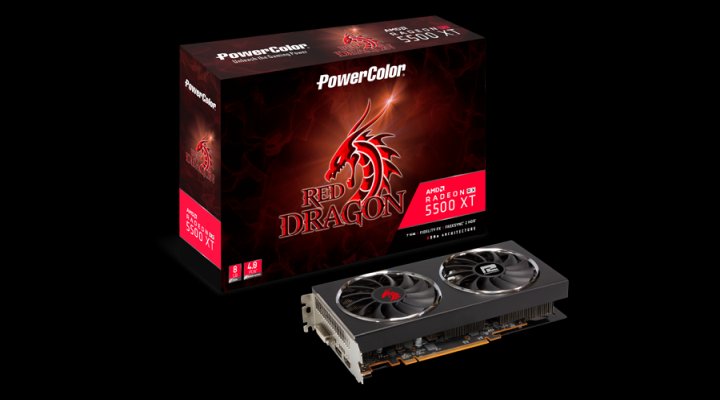

0
Latest News
- 2 Xbox Game Pass games. Star Wars: Outlaws comes with a newly released zombie apocalypse simulator
- „Bloodborne is a special game for me.” Dark Souls father's honest declaration is painful and hopeless, but true
- ARC Raiders dev acknowledges critics for the first time. „We are not deaf to concerns,” assures Virgil Watkins
- Was to be a hit for years, disappears without a trace. Anthem community says goodbye with slogan: „Strong alone, stronger together”
- Forget the dozens of hours in Baldur's Gate 3. New Divinity will get you stuck in the main menu forever

